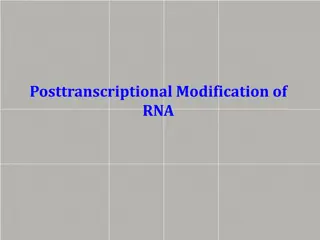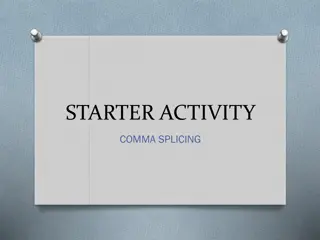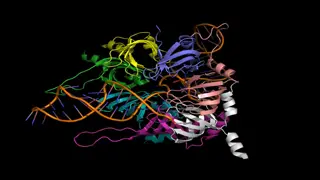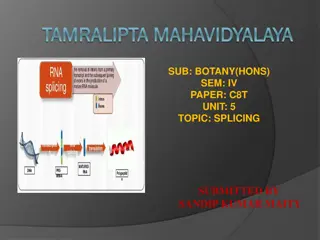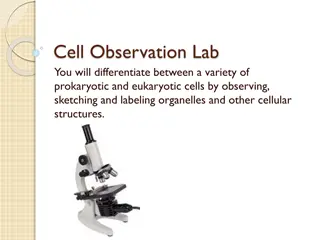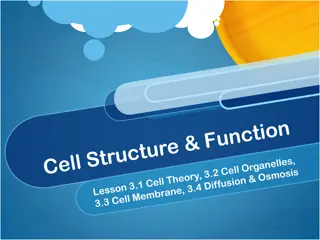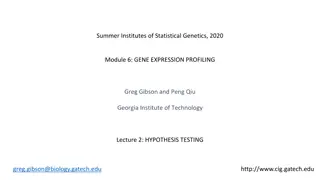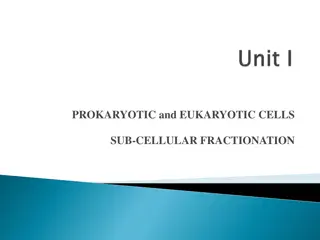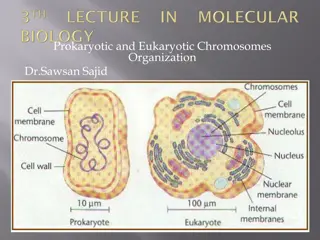Understanding Gene Structure and Splicing in Eukaryotic Cells
Explore the intricate world of gene structure and splicing in eukaryotic cells, covering topics such as exon-intron organization, central dogma, protein synthesis, genetic codes in translation, and protein 3D structure. Gain insights into the fundamental processes that regulate gene expression and protein production.
Download Presentation

Please find below an Image/Link to download the presentation.
The content on the website is provided AS IS for your information and personal use only. It may not be sold, licensed, or shared on other websites without obtaining consent from the author. Download presentation by click this link. If you encounter any issues during the download, it is possible that the publisher has removed the file from their server.
E N D
Presentation Transcript
Gene Structure, Splicing Lecture 3 Department of CSE, DIU
CONTENTS 1. Gene Structure 2. Central Dogma 3. Protein 4. Gene Regulation and Alternative Splicing 5. Miscellaneous Terms
1. Gene Structure A basic structure of Eukaryotic Gene
Eukaryotic Gene Structure Two major parts Exon & Intron Exon Takes part in protein coding and production Intron Does not take part in protein coding, part of pre-mRNA but gets filtered out in matured mRNA
2. Central Dogma Producing Protein from DNA
Major Steps of Central Dogma Transcription -RNA Polymeraseenzyme attaches to the start of the gene -mRNA is created (complimentary to DNA strand RNA Polymerase is attached) -mRNA is processed, unnecessary sections are removed (introns) -mRNA moves out of nucleus into cytoplasm Translation -mRNA binds to Ribosome -Ribosome reads code in mRNA (triplets/codons) -tRNA brings Amino Acid corresponding to codon -Chain of Polypeptide / Amino Acid is formed -Chain folds in different 3D shapes and produces different types of Proteins
Genetic Codes in Translation (Codons) Start Codon AUG Start Codon codes Methionine Stop Codon UAA, UAG, UGA 64 Combinations Possible 20 Amino Acids More than 1 combination can code single Amino Acid (Ex UUU, UUC both codes -Phe-)
3. Protein 3D Structure with different formation of Amino Acid chain
Protein Overview Chains of 20 types of Amino Acid Performs most of the cell functions -Regulates gene expression -Acts as enzymes which catalyze chemical reactions -Forms structures Folds into 3 dimensional structures Function of a protein is determined by its structure
4. Gene Regulation and Alternative Splicing Study different gene regulations and splicing method
Regulating Gene Expression Gene regulation refers to the mechanism of inducing or repressing the expression of a gene 2 types of regulation Positive & Negative Positive Regulation works with Activator * Operator + Activator = Transcription * Operator Activator = No Transcription Negative Regulation works with Repressor * Operator + Repressor = No Transcription * Operator Repressor = Transcription
Alternative Splicing DNA has genes Genes has regions Exons & Introns Pre-mRNA has both introns and exons Matured mRNA has only exons Different combinations of exon regions form different protein, this is alternative splicing Alternative Splicing is the process in which one gene produces many different proteins
5. Miscellaneous Terms Some comparisons, terms etc.
Phenotype VS Genotype Phenotype is the physical expression of a gene Genotype is the genetic structure Example Eye color is phenotype, and the gene responsible for eye color is genotype. genotype + environment phenotype genotype + environment + random-variation phenotype
Nucleotide VS Nucleoside Nucleoside = Base + Sugar Nucleotide = Base + Sugar + Phosphate








